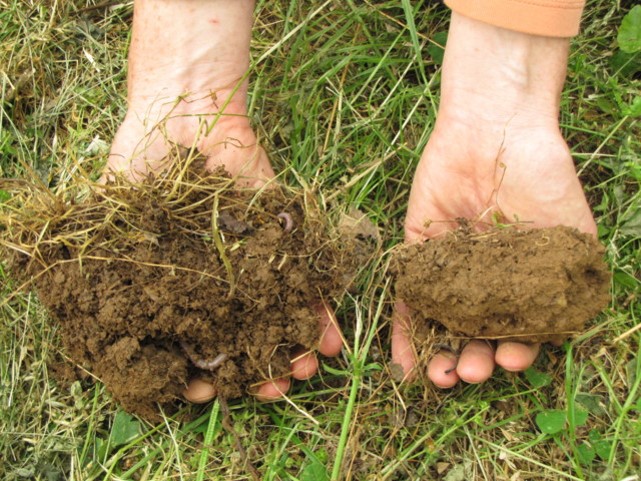No-till technology has conserved millions of tons of soil. Cover crops have also conserved tons of soil and prevented the leaching of nutrients into waterways.
Why not practice these two soil-conserving methods at once?

The untilled soil (left) has visibly different soil structure and bigger aggregates than the tilled soil (right). Photo credit: Ray Weil
Here we present a guide for how to think about finding the right cover crop niche,
as well as an overview of our research on low-residue winterkilled cover crops for early no-till vegetable production and a summary of others’ research on high-residue cover crops Although this information is not exclusively geared toward organic farmers, you will find a great deal of discussion about weed suppression, which seems to be the biggest hurdle to implementing long-term, no-till organic systems.
Knowledge of the value of green manures is centuries-old, but recently farmers and researchers have started to get really innovative with their cover cropping systems. You can find some valuable resources on YouTube! Most of the videos from the Northeast SARE-funded project Farmers and their Innovative Cover Cropping Techniques are available on YouTube, along with many others. We don’t want to reinvent the wheel on this website- check out SARE’s cover crop topic room that includes a whole section on cover crops and no-till production.



